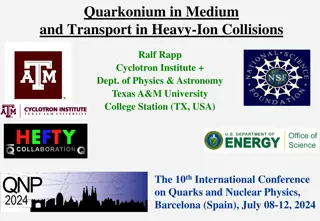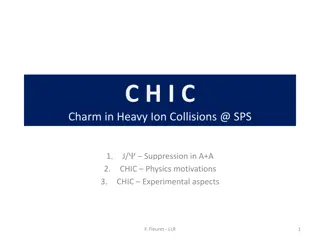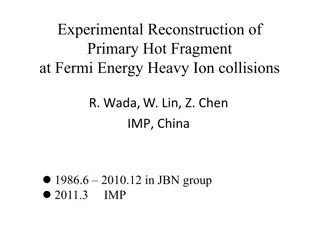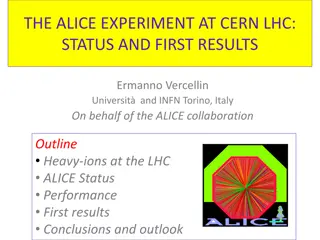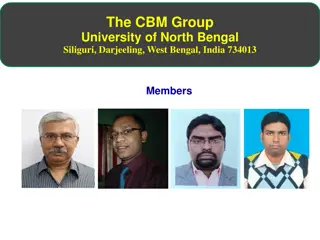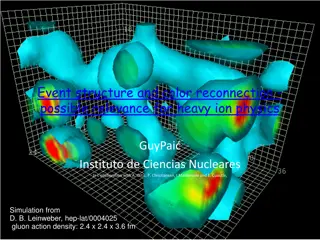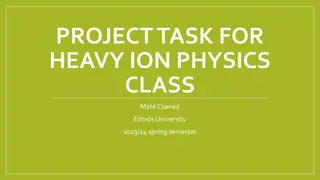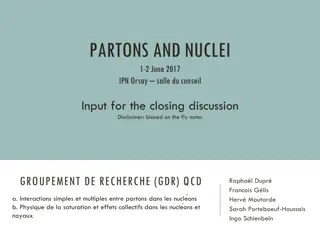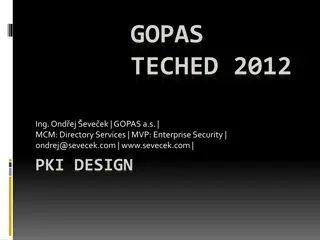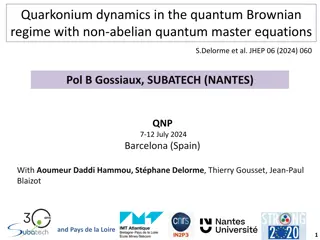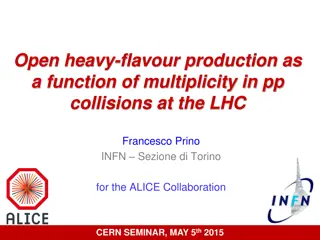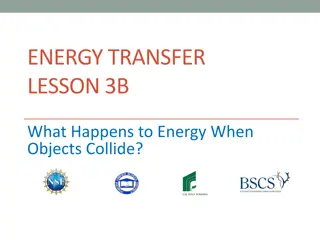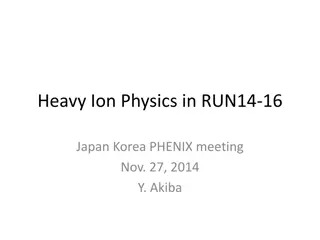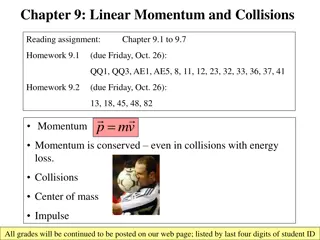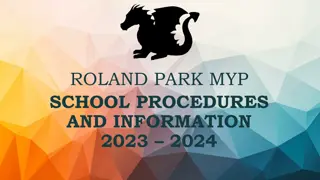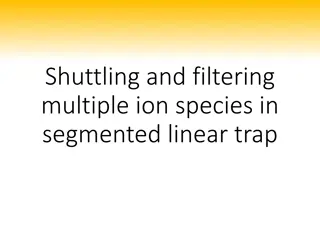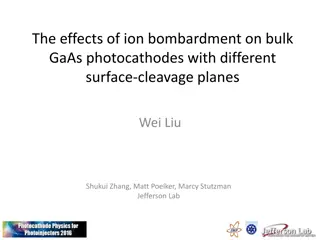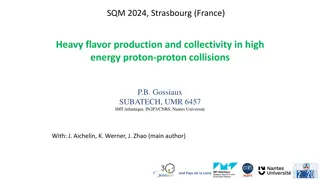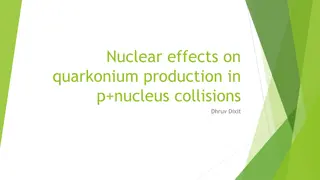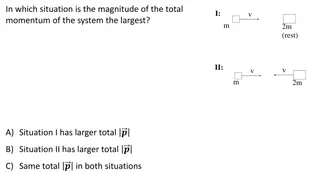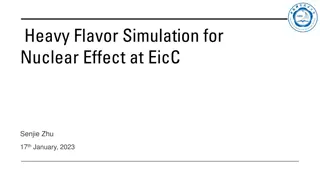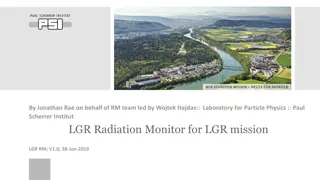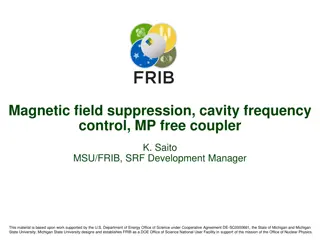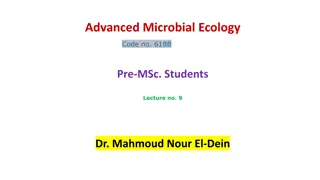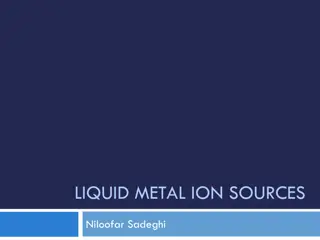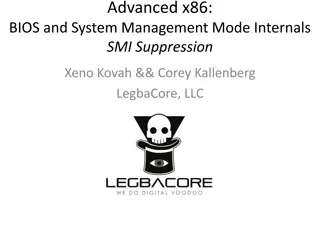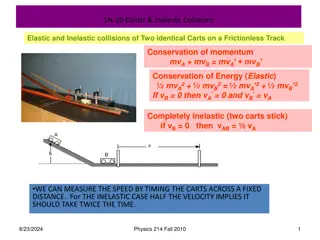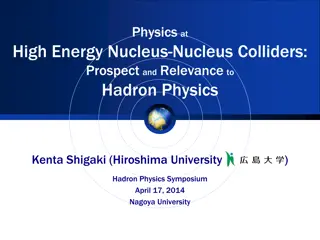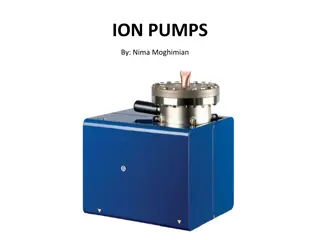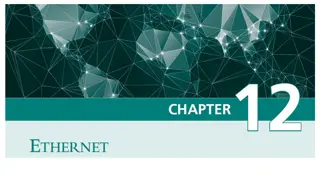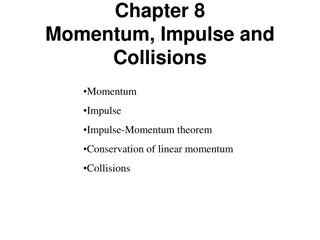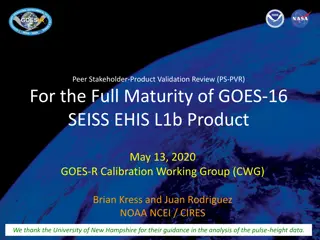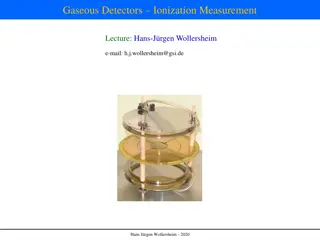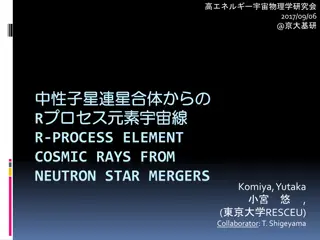Quarkonia Suppression in High Energy Heavy Ion Collisions by Roland Katz
Investigating the phenomenon of Quarkonia suppression in high energy heavy ion collisions, Roland Katz explores the properties of Quark Gluon Plasma and the behavior of quarks and gluons under extreme conditions. The study delves into the dynamics using the Schrödinger-Langevin equation, highlighting the deconfined state of matter where quarks and gluons can leave their hadron. Experimental observations through heavy ion collisions at high energies reveal a scenario akin to a perfect fluid, shedding light on the characteristics and observables of Quark Gluon Plasma. Indirect observable methods such as Quarkonia suppression are utilized to study the existence and properties of QGP due to its small size and short lifetime, providing insights into the nature of this unique state of matter.
Download Presentation

Please find below an Image/Link to download the presentation.
The content on the website is provided AS IS for your information and personal use only. It may not be sold, licensed, or shared on other websites without obtaining consent from the author. Download presentation by click this link. If you encounter any issues during the download, it is possible that the publisher has removed the file from their server.
E N D
Presentation Transcript
QUARKONIA SUPPRESSION IN HIGH ENERGY HEAVY ION COLLISIONS Roland Katz RPP 2015 15th of January 2015 Advisor: P.B. Gossiaux and TOGETHER Pays de la Loire
Summary Quark Gluon Plasma Quarkonia suppression Open questions and background Dynamical view The Schr dinger-Langevin equation Conclusion 2 Roland Katz 15/01/2015
Introduction Background Schrdinger-Langevin equation Conclusion Quarks and gluons Strong interaction properties (mediated by the gluons) Coupling Confines the quarks and gluons inside the hadron Asymptotic freedom Distance between 2 color charges So in normal conditions: the quarks and gluons can not leave their hadron ! 3 Roland Katz 15/01/2015
Introduction Background Schrdinger-Langevin equation Conclusion But The Quark Gluon Plasma (QGP) QGP = a new state of matter where the quarks and gluons can leave their hadron ! Temperature Phase diagram They are deconfined due the screening of color charges Early universe QGP 175 MeV Neutron star HADRON GAS NORMAL NUCLEAR MATTER Baryonic Density High temperature and/or density are required 4 Roland Katz 15/01/2015
Introduction Background Schrdinger-Langevin equation Conclusion Experimental QGP ? By colliding heavy ions at very high energies => large system => high particle density (Lorentz contraction and particles creation) => high temperature Collision scenario seems to behave like a perfect fluid 5 Roland Katz 15/01/2015
Introduction Background Schrdinger-Langevin equation Conclusion QGP observables ? Problem: small ( 10^-14 m) and short life-time ( 10^-21 s) bubble of QGP => indirect observables to study its existence and properties one of them: the Quarkonia suppression c Quarkonia ? b c b CHARMONIA BOTTOMONIA J/ : 13S1 mass = 3.096 Gev/c : 13PJ mass 3.5 Gev/c : 23S1 mass= 3.686 Gev/c (1S), (2S) and (3S)
Introduction Background Schrdinger-Langevin equation Conclusion QGP observables ? Problem: small ( 10^-14 m) and short life-time ( 10^-21 s) bubble of QGP => indirect observables to study its existence and properties one of them: the Quarkonia suppression c d Suppression ? If QGP: d If no QGP: d c d u d u u c u u u d d d c u d u c u NO u s suppression d QGP u d u u d u u d Hadrons d u Quarkonia SUPPRESSED ! c 7 Roland Katz 15/01/2015
Introduction Background Schrdinger-Langevin equation Conclusion Quarkonia suppression Observed experimentally (<- if no QGP) 0% suppressed 1st surprise: same suppression at collision energies 17 GeV and 200 GeV QGP size and T 100% suppressed but kinetic dependences still poorly understood PHENIX, PRL98 (2007) 232301 SPS from Scomparin@ QM06 8 Roland Katz 15/01/2015
Introduction Background Schrdinger-Langevin equation Conclusion Quarkonia suppression Observed experimentally Low energy J/ High energy J/ 0% suppressed 200 GeV 2.7 TeV 2.7 TeV 200 GeV 100% suppressed less high energy J/ at 2760 GeV 2nd surprise : more low energy J/ at 2760 GeV but kinetic dependences still poorly understood 9 Roland Katz 15/01/2015 Bruno s & PRL109 (2012) 072301 and JHEP05 (2012) 176 and CMS PAS HIN-10-006
Introduction Background Schrdinger-Langevin equation Conclusion Common theoretical explanation Sequential suppression by Matsui and Satz Each state has a dissociation Tdiss + QGP early T J/ : 13S1 20 % : 13PJ 60 % = if T > Tdiss the state is dissociated for ever ( all-or-nothing ) : 23S1 => quarkonia as QGP thermometer and recombination collision energy number of QQ in the medium probability that a Q re-associates with another Q 10 Roland Katz 15/01/2015
Introduction Background Schrdinger-Langevin equation Conclusion Sequential suppression VS dynamical view assumptions Stationnary QGP -> Reality is closer to a cooling QGP State formations at an early stage temperature -> State formations only at the end of the QGP phase Adiabatic evolution if formed; fast decorrelation if suppressed -> Quantum description of the correlated QQ pair Q hadronization Quarkonia or something else ? QGP Q 11 Roland Katz 15/01/2015
Introduction Background Schrdinger-Langevin equation Conclusion Ingredients ? Mean field: color screened binding potential V(r,T) Quantum Thermalisation Temperature scenarios T(t) + + Direct interactions with the thermal bath Cooling QGP Interactions due to color charges From hydrodynamics Drag A(T) From lQCD Increased screening at larger temperatures Schr dinger-Langevin (SL) equation Effective Langevin-like Semi-classical Results published in [1] 12 Roland Katz 15/01/2015 [1] R. Katz and P.B. GossaiuxJ.Phys.Conf.Ser. 509 (2014) 012095
IntroductionBackground Schrdinger-Langevin equation Conclusion Schr dinger-Langevin equation ? Warming term: dipolar stochastic operator Cooling term: dissipative non-linear potential -2 parameters: A (the Drag coef) and T (temperature) - Satisfies all the fundamental properties of quantum thermalisation: Boltzmann distributions (soon to be published), Heisenberg principle ok - Easy to implement numerically Boltzmann distribution line 13
IntroductionBackground Schrdinger-Langevin equation Conclusion Dynamics of QQ with SL equation First tests => simplifying assumptions: 1 cc pair in the heat bath 3D -> 1D Effective white noise Potential: T=0 K|x| Saturation (T) T= Linear approx 14 Roland Katz 15/01/2015
IntroductionBackground Schrdinger-Langevin equation Conclusion Dynamics of QQ with SL equation Transient phase: reequilibration of the bound eigenstates Na ve exp(- Gt) Decay of the global cc system with a common half-life 15 Roland Katz 15/01/2015
IntroductionBackground Schrdinger-Langevin equation Conclusion Conclusion First tests passed with success Relevant suppression pattern related to experimental observations: thermal effects -> less suppression of J/y, y RAA (J/y) > RAA (y ) for T>0.25 GeV Assumptions of adiabatic evolution and fast decorrelation ruled out ! Future Implementation of 3D and evolution scenario of the QGP Identify the limiting cases and make contact with other models Make contact with experimental results 16 Roland Katz 15/01/2015 katz@subatech.in2p3.fr www.rolandkatz.com
Mean color field: V(Tred, r) binding the QQ Static lQCD calculations (maximum heat exchange with the medium): F : free energy S : entropy U=F+TS : internal energy (no heat exchange) T Weak potential F<V<U * => some heat exchange Strong potential V=U ** => adiabatic evolution F<V<U V=U for Tred=1.2 Evaluated by M csy & Petreczky* and Kaczmarek & Zantow** from lQCD results 18 * Phys.Rev.D77:014501,2008 **arXiv:hep-lat/0512031v1 Roland Katz 15/01/2015
IntroductionBackground Schrdinger-Langevin equation Conclusion Dynamics of QQ with SL equation First tests => simplifying assumptions: 3D -> 1D Drag coeff. for c quarks*: Typically T [0.1 ; 0.43] GeV => A [0.32 ; 1.75] (fm/c)-1 white noise Potential: Stochastic forces => - feed up of higher states - leakage Linear approx Saturation (T) 19 Roland Katz 15/01/2015 * Gossiaux P B and Aichelin J 2008 Phys. Rev. C 78 014904
IntroductionBackground Schrdinger-Langevin equation Conclusion Dynamics of QQ with SL equation Na ve exp(- Gt) Thermal effects lead to more suppression if quarkonia initial states T => G until saturation for large T>>Tc Other initial states -> same long time decay 20
IntroductionBackground Schrdinger-Langevin equation Conclusion Dynamics of QQ with SL equation Thermal effects -> less suppression of J/y, y components at intermediate times 21 Roland Katz 15/01/2015
IntroductionBackground Schrdinger-Langevin equation Conclusion Dynamics of QQ with SL equation Y Y J/y y If initial gaussian cc -> RAA (J/y) > RAA (y ) for T>0.25 GeV 22 Roland Katz 15/01/2015
IntroductionBackground Schrdinger-Langevin equation Conclusion Dynamics of QQ with SL equation Y Y J/y y All these plots: kill the unjustified assumptions of very fast quantum decoherence and adiabatic evolution 23 Roland Katz 15/01/2015


